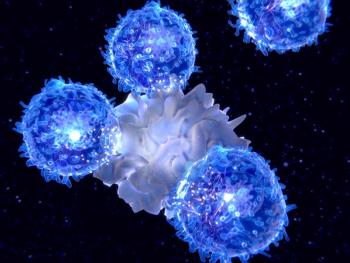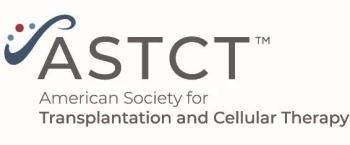
Disruptive Discovery in Acute Myeloid Leukemia Recurrence
Researchers discovered clinical and experimental evidence that calls into question the widely held notion that LSCs preferentially outlive chemotherapy.
Researchers discovered clinical and experimental evidence that calls into question the widely held notion that leukemic stem cells (LSCs) preferentially outlive chemotherapy. The findings were recently
“Our current study comprehensively profiles the in vivo cellular and molecular dynamics of human AML [acute myeloid leukemia] disease before, during, and after chemotherapy treatment,” wrote the authors, led by Allison L. Boyd, PhD, of the McMaster Stem Cell and Cancer Research Institute, Michael G. DeGroote School of Medicine, at McMaster University in Hamilton, Canada.
For decades, cytarabine (AraC)-based chemotherapy regimens have endured as the standard of care for adults. Even though this therapeutic approach has successfully induced remission, the majority of AML patients relapse with aggressive disease within 3 years.
Although several studies have examined the functional and molecular biology of relapsed AML, little work has been done to elucidate response to chemotherapy alone. One challenge in doing such work is that residual leukemic cells are killed off during cytoreductive therapy. It is also difficult to differentiate rare primitive AML cells from normal stem cells. Moreover, heterogeneous cell surface phenotypes displayed by LSCs taken from different AML patients compound this challenge.
“Our current study comprehensively profiles the in vivo cellular and molecular dynamics of human AML disease before, during, and after chemotherapy treatment,” the authors wrote.
Dr. Boyd and colleagues used chemotherapy-treated AML xenografts and patient samples to model patient relapse and remission kinetics. They found that LSCs were depleted during cell-cycle recruitment, thus obfuscating the perceived origins of AML recurrence.
A post-chemotherapy in vivo analysis demonstrated that transient leukemic-regenerating cells (LRCs), which are different from therapy-naïve LSCs, are responsible for tumor regrowth, and features of these LRCs can be utilized as markers of relapse and targeted therapies.
The team employed proof-of-principle xenograft models to show that LRC-targeting therapy prevents leukemic regrowth following chemotherapy. In addition to discovering that LSCs are not selectively resistant to chemotherapy, they observed a molecular profile of LRCs maintained across a gamut of human AML cases, but not present in healthy hematopoietic regenerating cells.
“We propose that, like healthy stem cell populations that become activated in response to injury, reservoirs of primitive AML cells also transition out of dormancy to replenish the supply of leukemic blasts,” the authors wrote.
Notably, these findings jell with “timed sequential therapy,” wherein chemotherapy is strategically timed to align with proliferative states following previous chemotherapy treatment.
In an interview with Cancer Network,
“This pre-clinical study shows that leukemia stem cells are not the only players in AML relapse and that leukemic regenerating cells contribute to disease recurrence. Understanding LRC markers for disease compared to regeneration of normal hematopoiesis gives further information of the biology of AML,” she said. “This study may lead to further studies that delve into AML treatment responses after intensive cytotoxic therapy. Detecting early relapse and subsequently initiating treatment at an early timepoint will likely improve outcomes. Currently, there are many factors that drive relapse and knowing what to treat and when to treat remains an unanswered question. The concept of ‘timed sequential therapy’ is not new and has potential to have a resurgence if given in the right setting,” Lai added.
“This study is novel in its premise that the transient LRC can emerge from stem cell reservoirs after chemotherapy and possess unique molecular profiles,” Wang said. “However, much more work needs to be done to determine if these cells truly exist and are relevant in actual AML patients receiving cytarabine-based chemotherapy rather than just preclinical models, albeit good ones. These data force us to think of AML recurrence in a newly dynamic and fluid manner.”
Newsletter
Stay up to date on recent advances in the multidisciplinary approach to cancer.

















































































